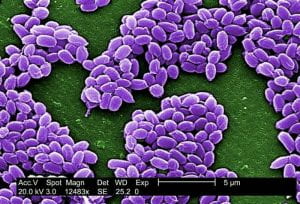Bioterrorism is the deliberate release of viruses, bacteria or other pathogens (germs) with the intent to cause: illness and/or death in people, animals or plants; economic disruption and social unrest.
These agents, such as anthrax, plague, botulism, and small pox may be typically found in nature but can be altered to cause harm. There are several means of distribution of bioterrorism agents including air, water and the food supply.

General Resources
Planning for bioterrorism emergencies – guidelines for preparing to prevent or respond to bioterrorism. CDC
Agency for Toxic Substances and Disease Registry within the Dept. of Health & Human Services provides extensive information about hazardous materials including: toxicological profiles for medical/professional communities; factsheets for general public; emergency response contacts, guidelines and training materials.
Botulism
Botulism is a rare but serious paralytic illness caused by nerve toxin produced by the bacterium Clostridium botulinum. Botulism toxin can be inhaled or ingested via contaminated food or water or contracted through wounds or other means of inadvertent injection. Person-to-person transmission does not occur. All forms of botulism can be fatal and are considered medical emergencies.
Foodborne botulism can be especially dangerous because of potential for widespread exposure to the contaminated food. Clostridium botulinum is most likely to grow in lightly preserved foods such as fermented, salted or smoked fish and meat products and in low acid foods such as vegetables that are preserved at home.
Deliberate Cases: Experts believe that botulism is one of 5 pathogens most likely to be used in bioterrorism attacks as a weapon (others are anthrax, plague, smallpox and tularaemia).
RESOURCES
Botulism – information from the CDC.
Food Safety Advisory – USDA Food Safety and Inspection Service (FSIS) provides recommendations for handling frozen and fully-cooked products suspected of botulism contamination.


